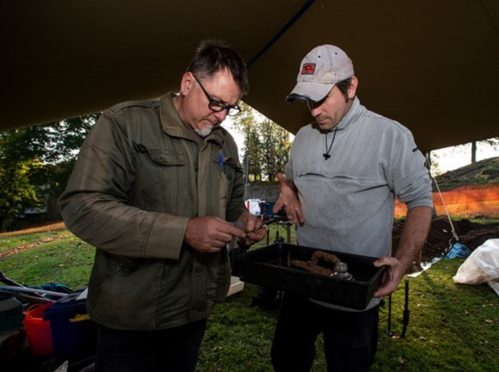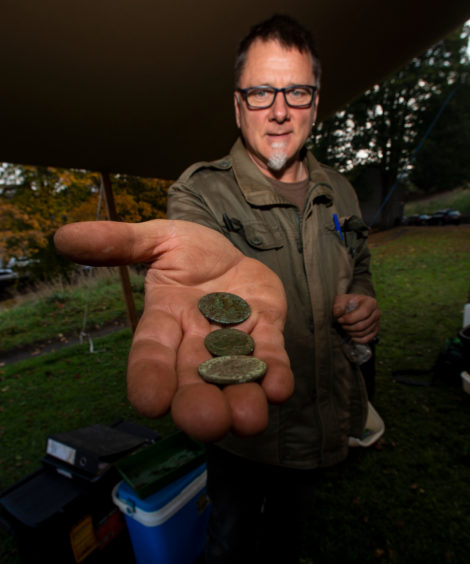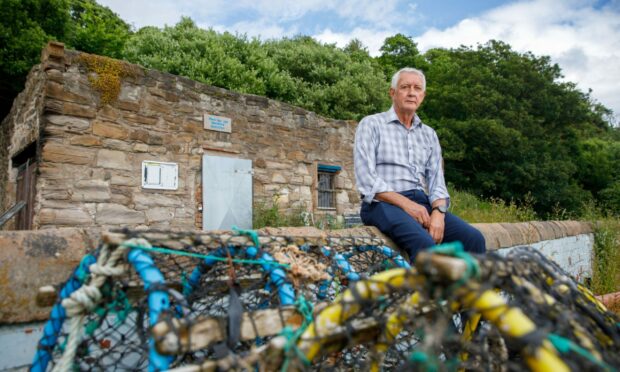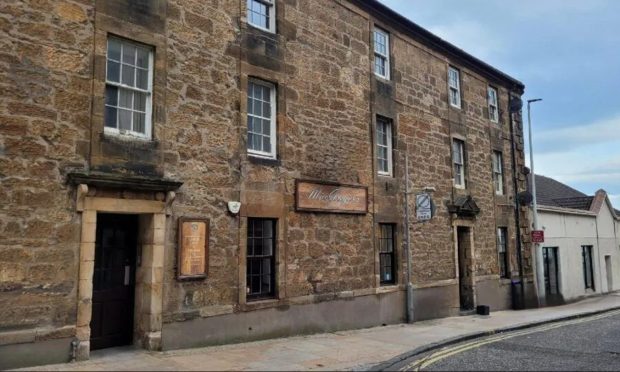The discovery of what appears to be a Bronze Age cremation pit under the centre of Cupar has been hailed as an archaeological find of national importance.
Cremated bone was uncovered during the final day of a community excavation at East Moat Hill involving volunteers and experts.
The remains were radiocarbon dated and found to be 4,000 years old.
There is already evidence that the area was a place of medieval assembly, where open-air councils were held and justice dispensed, until the 15th Century but the findings have revealed its earlier significance.
Coins, metal objects, a gunflint and a .303 cartridge were among other discoveries from the 17th to 20th centuries made during the dig in October.
It was performed as part of the Cupar Conservation Area Regeneration Scheme and Townscape Heritage Initiative.
Alastair Rees of ARCHAS Archaeology said: “The very last day of the excavation revealed some interesting deposits on the summit of the hill.
“A large, deep pit was revealed and a small investigative trench was excavated into this feature.
“At the base of the pit, a small cremation deposit was located.”
He said his team was able to extract a small sample of the cremated bone which has been radiocarbon dated to approximately 1750BC, roughly the transition from the Early to the Middle Bronze Age, nearly 4,000 years ago.
“Although only a small part of this large feature was investigated it is very likely that what was revealed is a Bronze Age cremation pit in the centre of Cupar,” he said.
“It is also highly probable that there will be other similar features located close to the pit already identified as these features are often found in small clusters.”
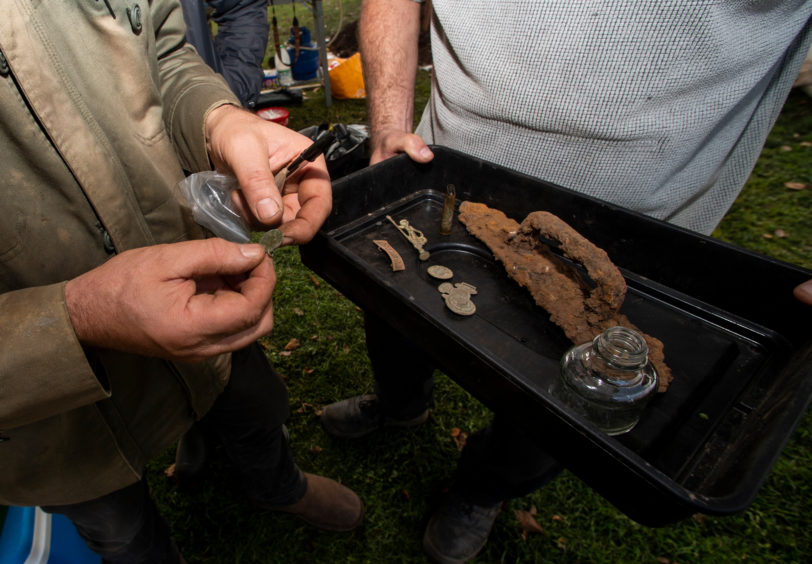
Douglas Speirs, Fife Council archaeologist, said: “This is a really exciting find.
“The Cupar CARS/THI community excavation not only provided a vehicle for local people to actively explore their local heritage but in doing so, they have made a discovery of national importance.
“Prehistoric origins for early medieval places of assembly have long been postulated but to date only a couple of sites have revealed tangible evidence to support this assumption.
“The discoveries at Cupar add to this growing corpus of evidence and shed new light on our understanding of the very deep history of medieval open air court sites.”
Some 20 volunteers worked with ARCHAS Cultural Heritage and AKD Archaeology to excavate four trenches across the hill during the project, funded by Historic Environment Scotland and the Heritage Lottery Fund.
As well as allowing people to explore the town’s heritage it was aimed at teaching new skills through on-site training.
The findings will be presented at a free seminar on Thursday January 31, in the County Buildings, Cupar, at 7.30pm. To book places email akd.archaeology@hotmail.com.
Visits will also be made to local primary schools.
